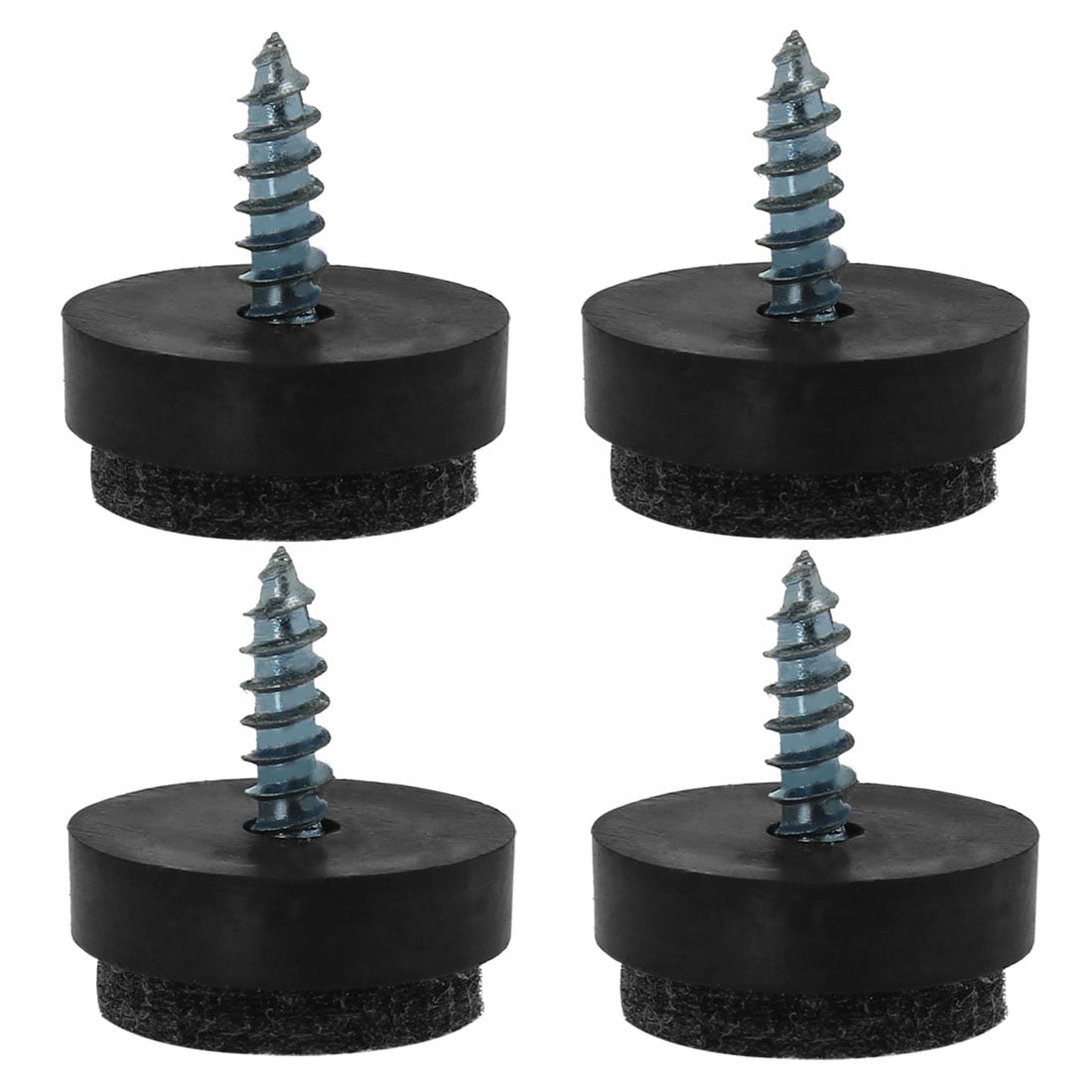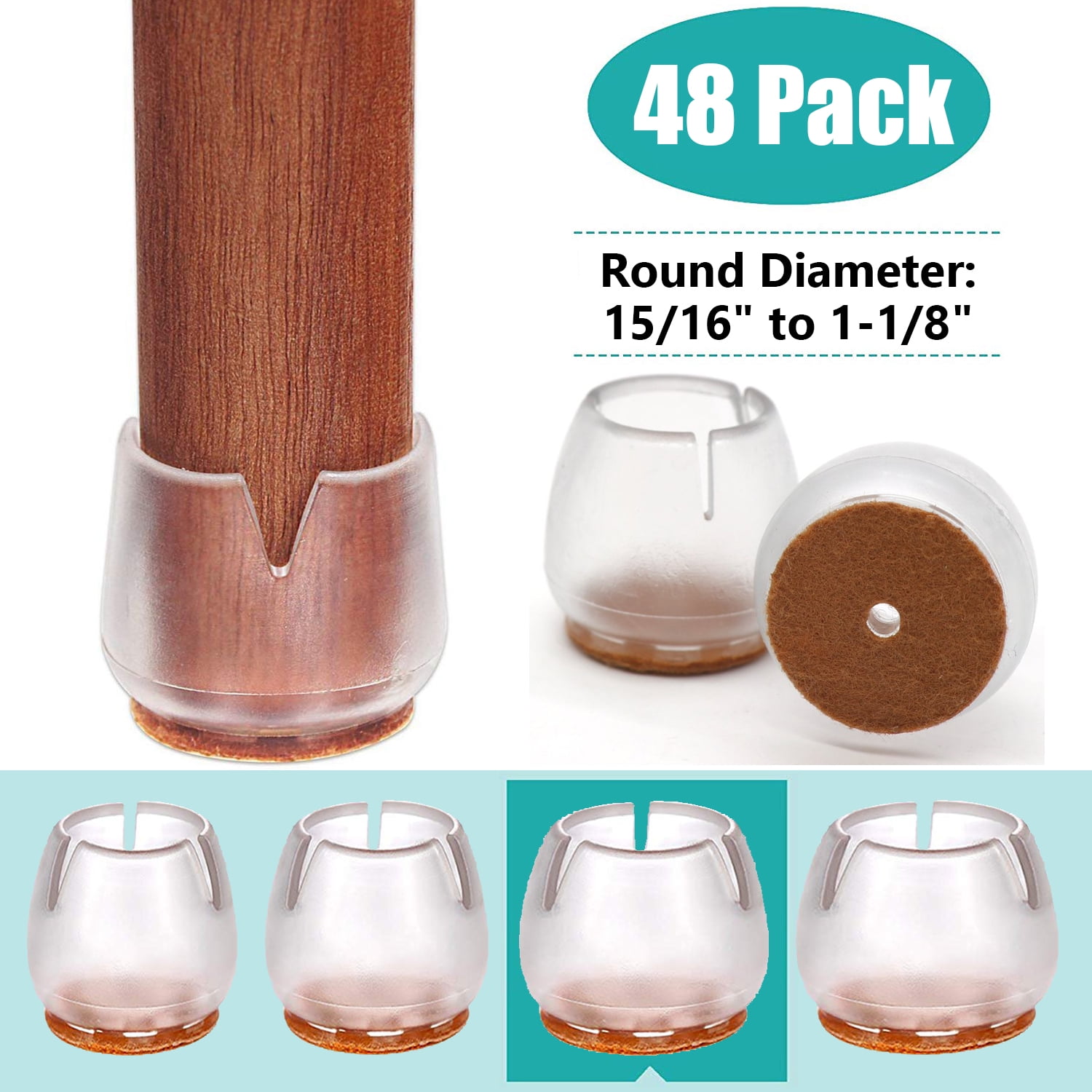The Importance of Dining Chair Feet Pads

Dining chair feet pads, often overlooked, play a crucial role in maintaining the longevity of your floors and enhancing the overall dining experience. These small, often inconspicuous accessories offer a range of benefits that go beyond mere aesthetics.
Floor Protection
Dining chair feet pads are essential for protecting your floors from scratches, dents, and wear and tear. The constant movement of chairs can lead to unsightly marks on delicate surfaces like hardwood floors or tiles. Feet pads act as a buffer, absorbing the impact and preventing damage to the floor.
Noise Reduction
The sound of chairs scraping across hard floors can be a significant annoyance, especially during meals or gatherings. Dining chair feet pads significantly reduce this noise by providing a smoother and quieter glide. This creates a more peaceful and comfortable dining environment.
Stability Enhancement
Dining chair feet pads can also improve the stability of your chairs, especially on uneven surfaces or with heavier chairs. The added surface area and friction provided by the pads help prevent chairs from wobbling or tipping over, ensuring a safer and more secure dining experience.
Types of Dining Chair Feet Pads
- Felt pads are soft and gentle on floors, offering excellent noise reduction and scratch protection. They are ideal for delicate surfaces like hardwood floors and are available in various colors to match your furniture.
- Rubber pads are durable and provide a strong grip, making them suitable for heavier chairs and high-traffic areas. They are also resistant to wear and tear, ensuring long-lasting protection for your floors.
- Plastic pads are a budget-friendly option that offers basic protection and noise reduction. They are often used on lighter chairs and are available in various colors and designs.
- Metal pads are typically used for industrial or commercial settings, offering superior durability and resistance to heavy wear and tear. They are less common in residential settings.
Situations Where Dining Chair Feet Pads Are Crucial
- Hardwood floors are particularly susceptible to scratches and dents from chair legs. Dining chair feet pads are essential for protecting the natural beauty and value of these floors.
- Tiled surfaces can also be damaged by chair legs, especially if the tiles are delicate or uneven. Feet pads provide a protective barrier and ensure a smooth and quiet glide.
- Heavy chairs can exert significant pressure on floors, increasing the risk of damage. Using dining chair feet pads helps distribute the weight and minimize the impact on the floor surface.
Choosing the Right Dining Chair Feet Pads

Selecting the right dining chair feet pads is crucial for protecting your floors and ensuring the smooth and silent movement of your chairs. The ideal choice depends on factors like your floor type, the weight of your chairs, and the features you desire.
Factors to Consider When Choosing Dining Chair Feet Pads
- Floor Type: Different floor types require different types of feet pads. For example, hardwood floors may benefit from felt pads, while tile floors may require rubber or plastic pads.
- Chair Weight: Heavy chairs require more robust feet pads that can support their weight and prevent damage to the floor.
- Desired Features: Some features to consider include self-adhesive pads for easy installation, adjustable height for leveling chairs, and anti-slip properties for added stability.
Types of Dining Chair Feet Pads
- Felt Pads: Felt pads are a popular choice for hardwood floors, offering a soft and smooth glide. They are also relatively inexpensive. However, they may wear out quickly and may not provide sufficient protection for heavy chairs.
- Rubber Pads: Rubber pads offer excellent grip and durability, making them suitable for tile floors and heavy chairs. They can also help to reduce noise and vibration. However, they may leave marks on delicate surfaces.
- Plastic Pads: Plastic pads are a cost-effective option that provides a good balance of grip and durability. They are available in various shapes and sizes to suit different chairs. However, they may not be as quiet as felt or rubber pads.
- Metal Pads: Metal pads are often used for heavy chairs and can withstand high levels of wear and tear. They can also provide a more elegant look. However, they can be noisy on hard floors and may scratch delicate surfaces.
Dining Chair Feet Pad Options, Dining chair feet pads
| Type | Features | Benefits | Drawbacks |
|---|---|---|---|
| Felt Pads | Soft, smooth glide, inexpensive | Quiet, protect hardwood floors | Wear out quickly, may not be suitable for heavy chairs |
| Rubber Pads | Strong grip, durable, noise reduction | Suitable for tile floors and heavy chairs | May leave marks on delicate surfaces |
| Plastic Pads | Cost-effective, various shapes and sizes | Good balance of grip and durability | May not be as quiet as felt or rubber pads |
| Metal Pads | Durable, elegant look | Suitable for heavy chairs | Noisy on hard floors, may scratch delicate surfaces |
Installing and Using Dining Chair Feet Pads

Installing dining chair feet pads is a simple process that can significantly enhance the longevity and functionality of your chairs. These pads act as protective barriers, preventing scratches on your floors and minimizing noise when moving the chairs. Let’s explore the installation process and maintenance tips to ensure your chair feet pads provide optimal protection for your furniture and floors.
Installing Dining Chair Feet Pads
Installing dining chair feet pads is a straightforward process that can be completed in a few simple steps. To ensure proper installation and long-lasting performance, it’s crucial to follow these steps:
- Measure the Chair Leg Diameter: Before purchasing chair feet pads, measure the diameter of your chair legs. This will ensure you choose pads that fit snugly and securely.
- Clean the Chair Legs: Before attaching the pads, clean the chair legs with a damp cloth to remove any dirt or debris. This will ensure a clean and secure attachment.
- Attach the Feet Pads: Depending on the type of feet pads, there are various attachment methods.
- Self-Adhesive Pads: These pads typically have a peel-and-stick adhesive backing. Simply peel off the protective layer and press the pad firmly onto the chair leg. Ensure the pad is centered and securely attached.
- Screw-On Pads: These pads require a small screw to attach them to the chair leg. Use a screwdriver to secure the screw into the pre-drilled hole in the pad. Ensure the screw is tight enough to hold the pad securely, but avoid overtightening, which can damage the chair leg.
- Friction-Fit Pads: These pads rely on friction to stay in place. Simply slide the pad onto the chair leg until it reaches the desired position. Ensure the pad is securely fitted and does not easily slip off.
Maintaining and Cleaning Dining Chair Feet Pads
To ensure your dining chair feet pads provide long-lasting protection, proper maintenance is essential. Follow these simple tips to keep your pads in optimal condition:
- Regular Cleaning: Regularly wipe down your chair feet pads with a damp cloth to remove any dirt, dust, or debris that may accumulate. This will help maintain the adhesive properties of self-adhesive pads and prevent buildup that could hinder their effectiveness.
- Replace Worn Pads: Over time, chair feet pads may become worn or damaged, especially if they are exposed to heavy use or abrasive surfaces. Inspect your pads regularly and replace them as needed to ensure continued protection and functionality.
- Avoid Harsh Chemicals: When cleaning your chair feet pads, avoid using harsh chemicals or abrasive cleaners that could damage the material. Stick to mild cleaning agents and a soft cloth to prevent any deterioration.
Visual Guide to Installing Dining Chair Feet Pads
Illustration 1: Attaching Self-Adhesive Pads to a Wooden Chair Leg
* A simple illustration showing a wooden chair leg with a self-adhesive pad being attached. The illustration should depict the pad being peeled off and pressed onto the chair leg. The illustration should highlight the importance of centering the pad and pressing it firmly to ensure a secure attachment.
Illustration 2: Attaching Screw-On Pads to a Metal Chair Leg
* A visual representation of a metal chair leg with a screw-on pad being attached. The illustration should depict the screw being inserted into the pre-drilled hole in the pad and secured with a screwdriver. The illustration should emphasize the importance of tightening the screw securely without overtightening, which could damage the chair leg.
Illustration 3: Attaching Friction-Fit Pads to a Plastic Chair Leg
* A depiction of a plastic chair leg with a friction-fit pad being slid onto the leg. The illustration should highlight the importance of ensuring the pad is securely fitted and does not easily slip off.
Dining chair feet pads are a great way to protect your floors and prevent scratches, especially if you have a set of chairs that see a lot of use. If you’re looking for a compact and stylish dining set, a 5 piece dining table and chair set is a great option.
These sets often come with chairs that have a variety of feet styles, so make sure to choose pads that are compatible with your chair’s design. With the right pads, you can keep your floors looking their best and your chairs looking their best for years to come.
Dining chair feet pads are a great way to protect your floors from scratches and scuffs. They can also help to reduce noise when you move your chairs around. If you’re looking for additional protection, consider investing in waterproof dining chair slipcovers to safeguard your chairs from spills and stains.
Once you have both, you can enjoy your dining room with peace of mind, knowing that your furniture is well-protected.
